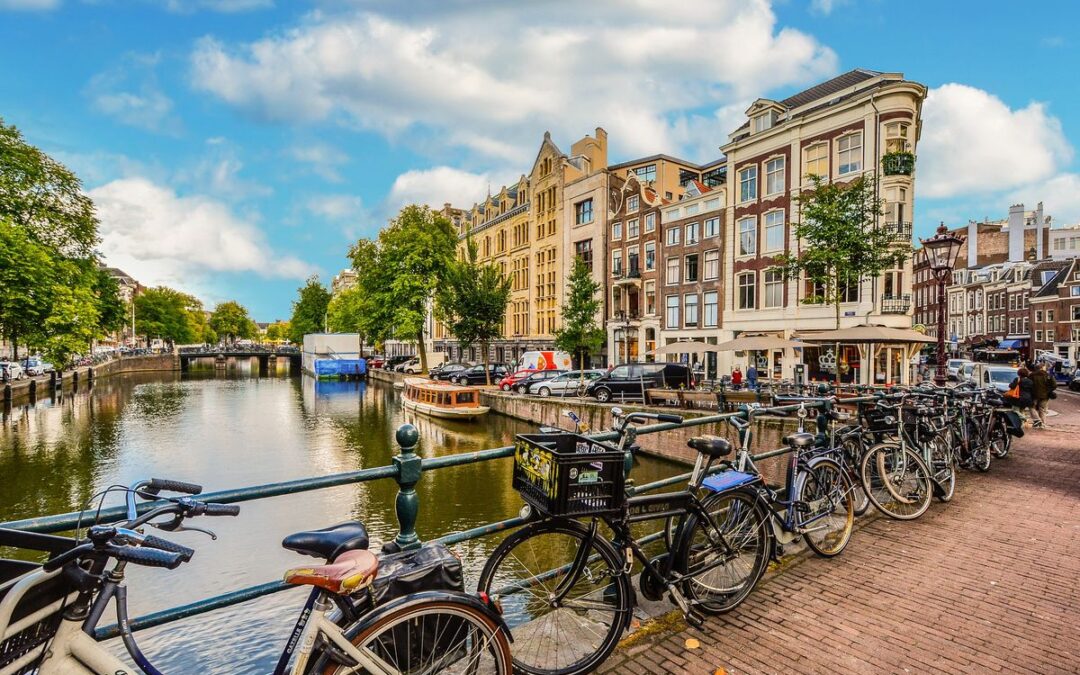As cities across the globe explore measures to reduce carbon emissions, many have launched bike infrastructure projects that encourage more residents to start cycling. Several global cities, including the following, embraced cycling long ago and can serve as examples for other cities currently in the process of making themselves more bike-friendly.
Utrecht, Netherlands
The Dutch are known worldwide as avid cyclists, and Amsterdam may be the world’s most famous bike-friendly city. However, the capital city is not the most bikeable city in the Netherlands—that honor goes to Utrecht, which is also the most bikeable city in the world.
Like many other Dutch cities, Utrecht has top-tier cycling infrastructure, high bicycle modal shares, and intermodality. Cycling is also an extremely common form of transportation among residents from all occupations. Over 125,000 of the city’s approximately 350,000 residents regularly cycle.
While many major cities in the Netherlands have impressive bike infrastructure, Utrecht stands out. The city has 420 kilometers (260 miles) of bicycle paths, the largest bicycle parking facility in the world (with spots for up to 12,500 bikes), and a total of over 30,000 bicycle parking spaces near Utrecht Central Station.
Copenhagen, Denmark
Copenhagen is another European city famous for its bike-friendliness. Sixty-two percent of the city’s residents commute to work, school, or university by bicycle, and about 1.2 million kilometers (.075 million miles) are cycled each day in Copenhagen. There are near as many bicycle commuters in greater Copenhagen as there are in the entire United States. Copenhagen’s dense urban proximities, short distances, and flat terrain make the city ideal for cycling.
The city has embraced its cycling culture by investing in cycling infrastructure. Copenhagen is home to 390 kilometers (242 miles) of designated bike lanes and hundreds more kilometers of regional cycle highways. There is even a “Cycle Super Highway” that connects the Danish capital to the town of Albertslund.
The city first began implementing a municipal bike policy in 1996 with the introduction of 10 key indicators of bike-friendliness. Their most recent municipal bike strategy, “The City of Copenhagen’s Bicycle Strategy 2011-2025,” was introduced in 2011. This strategy is designed to make Copenhagen the world’s most bike-friendly city by 2025.
The plan focuses on four main cycling areas: city life, comfort, speed, and safety. The main goal is to increase Copenhagen’s bicycle modal share to 50 percent of commuter trips. The city plans to reach this goal through several strategies, such as widening cycle tracks to three lanes, building new bridges open only to cyclists and pedestrians, and redesigning intersections with high accident rates.
Antwerp, Belgium
Antwerp is yet another Western European city with one of the best biking infrastructures in the world. The compact layout of the city is great for cycling, and there are plenty of bike-share services for visitors or locals who are new to cycling and not ready to buy their own bikes yet.
The metropolitan area is home to a cycle highway, which is connected to various major highways through the FR10 Ringfietspad (“cycle ring road”), which leads to Antwerp’s cycle network.
The municipality also began a citywide project to build new cycle streets, closed to vehicles and reserved solely for cyclists. Nine different axes of the city will be rebuilt as cycling streets. This project shows the city’s dedication to becoming more cycle-friendly and reducing car dependency.
Münster, Germany
Münster is easily Germany’s most bicycle-friendly city. It has a multitude of designated bike lanes, cycling paths, and signage to accompany cyclists. Cycling is so big in Münster that there are twice as many bicycles as city inhabitants.
The city is home to Europe’s only cycle ring road, the Promenade, which circles the city center. All sides of the city can be reached from this road. All of the tourist attractions are also easily accessible by bike, which makes cycling a fantastic way to explore the city as a visitor.
Münster’s main railway station has the largest cycle station in Germany, with over 3,500 bike parking spaces, a bicycle rental service, a repair shop, and a bike-washing facility.
Strasbourg, France
France’s cycling capital Strasbourg is ranked as the fourth most bike-friendly city in Europe. The city is home to an impressive 600 kilometers (372 miles) of bike paths that stretch across the entire urban area.
Strasbourg has been a pioneering city in building an infrastructure that prioritizes cyclists and pedestrians. For the past 20 years, the city has hosted an annual cycling festival called Fête du Vélo in the summer.
There are over 38,000 bike parking spaces throughout the city and 4,000 Vélhop bike rental stations. Strasbourg is one of the most beautiful cities in France and a big tourist draw, and like the other cities on this list, renting a bike is one of the best ways to see the tourist attractions and explore the lesser-known corners of the city.

